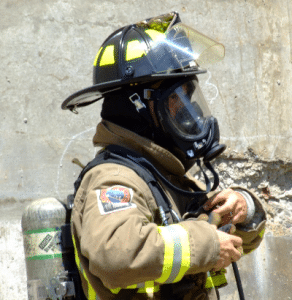Have you ever experienced too much moisture in your compressed breathing air sample? Has your air sample failed quality testing because of excessive moisture?
All ambient air contains some level of moisture no matter if the air is from a moist gulf coast region or in the Sahara Desert. A compressor draws in air and compresses the air to a much smaller volume. During this compression process liquid water condenses from the air and is removed, the remaining air is always at 100% relative humidity.
Example: If you wring out a wet sponge, liquid water will be removed, but the sponge still remains on the verge of dripping while you maintain your grip on it. If you have two sponges—one very wet and one somewhat wet—they will have different amounts of liquid water before being wrung out but have the same amount of water retained after the wringing process. Likewise, the air coming out of your compressor is at 100% relative humidity while under pressure regardless of how much water it contained to begin with.
Typically there is a condensate collection and purge system on the compressor system to remove this liquid water. In order to remove the remaining moisture, high-pressure systems (2200 to 4500 psi that are used with SCBA tanks) require desiccant filtration such as a molecular sieve dryer. This is usually a canister that air passes through after leaving the compressor but before it gets to the SCBA cylinder or a cascade air storage system.
When the desiccant filtration system can no longer absorb moisture, the moisture ends up passing through to your SCBA or cascade system. A properly operating desiccant system should produce air much drier than -65°F, which is the Compressed Gas Association (CGA ) Grade L and NFPA 1989 specification requirement. If the moisture content is in the -60°F to -70°F range , then the desiccant is already in need of changing. This means that if you barely pass your moisture test today, tomorrow you may fail. Once a desiccant system reaches its limit the desiccant material is no longer able to absorb moisture and needs to be changed.
Moisture in the air is not dangerous to breathe as long as it isn’t condensed to liquid water. However, it can be dangerous to your health if it interferes with the operation of your equipment. If during cold weather, moist compressed air enters and condenses in your SCBA regulator, your regulator could freeze in a fixed position and cause disruption of the air supply. Moisture also promotes or accelerates the formation of corrosion and possibly the growth of mold or bacteria inside your SCBA or cascade system.
Some suggestions about what to do after you perform maintenance on your system include the following. (These suggestions are not to be used in place of your compressor system maintenance manual but are offered as general supplementary suggestions based on our experience.)
1. If you are testing your compressor system at a point before the air enters the cascade and the air fails to meet the specification, you should first perform maintenance on the system to correct the problem and then test the air coming out of the cascade. If the air in the cascade fails to meet the specification the moisture must be purged from the cascade and the system retested.
2. Make sure all condensed-water purge systems are working. If the condensate collection and purge system is not functioning properly, liquid water can build up and move down through the piping and holding tanks. If this happens it will require removing the water, if possible, from all locations where trapped and then running the compressor and exhausting to the atmosphere to evaporate the water. This may take some time to be effective.



